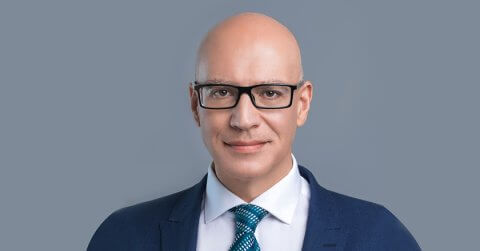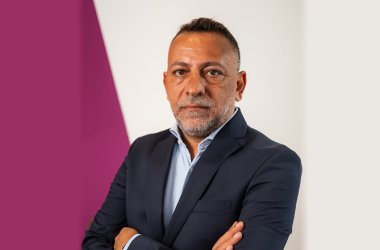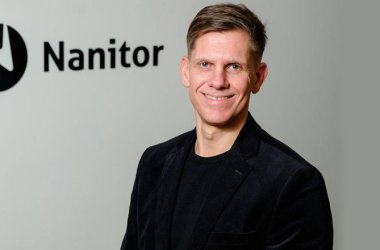
Andrew Williamson, Vice-President Global Government Affairs and Economic Adviser, Huawei Technologies
“If you want to get rich, first build excellent digital infrastructure and connect to the internet”.
Digital transformation and connectivity yield unquestionable benefits, including improved productivity, innovation and modernisation, accelerated economic growth and advanced human development. This is particularly pronounced in the emerging markets. As a result, digital transformation has also become a priority for sustainable development. Connectivity – as the foundation for digital transformation – is also fast becoming a basic requirement for everyone.
Moreover, many experts continue to argue that we are on the cusp of a radical fourth industrial revolution, undergirded by digital transformation. As potentially impactful economically as the diffusion of electrification and the internal combustion engine were just over 100 years ago.
Enlightened governments in the Middle-East and Central Asia region are at the vanguard of this change. They are drafting and building visionary plans for this decade.
Saudi Arabia’s Vision 2030 for example, includes world-class mega-projects such as NEOM – a bold dream of a new future, an accelerator of human progress that will embody the future of innovation in business, liveability and sustainability.
The United Arab Emirates Vision 2031 is another resolute design backed by the government to radically improve the lives of its citizens. Among its many goals the national plan aims to provide the UAE with a ‘Forward Ecosystem’ in terms of technological developments, including world class digital infrastructure.
Egypt’s ICT 2030 Strategy is an all-encompassing vision and plan, which lays the foundations for the transformation of Egypt into a digital society. It is based on three main pillars – Digital Transformation, Digital Skills & Jobs and Digital Innovation.
Qatar’s National Vision 2030 is strategically organized into five objectives, which are seen as the critical components needed to create a sustainable digital future. These include improving connectivity, boosting capacity, fostering economic development, enhancing public service delivery and advancing societal benefits.
Huawei has also been tireless in its exploration and planning for what the world of 2030 could realistically look like.
Over the past three years, we have hosted more than 2,000 seminars, bringing together over 1,000 academics, customers, and partners. Based on these rigorous discussions, our experts from around the world have compiled our thoughts on the next decade into the research programme: Intelligent World 2030. There are some bold visions and predictions for what our societies and economies will look like by the end of this decade.
- By 2030, we predict that digital transformation will have brought a new wave of modernisation to enterprises and a new productivity boom. We expect the number of robots per 10,000 workers in the manufacturing sector globally to have more than tripled by 2030.
- We also predict that by 2030, sensitive biosensors will be in widespread use. Massive amounts of health data will be stored on the cloud, making health computable. People will be able to proactively manage their health for the first time, shifting healthcare systems focus from treatment to prevention.
- By 2030, our transport systems are likely to have incorporated multiple innovations across many different dimensions. We forecast that 50% of all new automotive vehicles sold globally by then will be electric vehicles.
Nevertheless, our research has also established that without government led interventions and external support, citizens, SMEs, and large enterprises are likely to be impeded or even become stuck in their current digital transformation journeys.
These market failures provide a rationale for government intervention because the private sector cannot – or rather have insufficient resources or incentives – to produce socially efficient outcomes on their own for a nation as a whole. Only through close collaboration between government, the private sector and other stakeholders can these market failures be overcome.
Broadly I call it the ‘AIDE framework’. Here are some examples of how Huawei is contributing to real-world solutions.
- Access: Expand digital inclusion (infrastructure) and close digital divides. As an example, Huawei is one of several stakeholders working actively with the government of Egypt on its ‘Decent Life Project’. It is helping to extend digital connectivity to more rural and remote areas of the country that currently have low levels of digital connectivity. Huawei’s Rural Star solution is also transforming the economic viability of remote rural connectivity in the region.
- Innovation: Support new start-ups, provide funding to develop domestic digital ecosystems and digital industrial transformation. Huawei’s Dubai Openlab provides an open innovation and testbed environment for locally based solutions for IoT, cloud computing, and converged communications to help bring to market public safety, smart city, oil and gas sector digital applications and solutions.
- Development: Encourage digital skills development, foster resilience and digital autonomy nationally. Huawei’s Saudi Talent Enabling Program (STEP) aims to contribute to the upskilling of Saudi Arabia’s digital skills pool and plans to benefit 10,000 local talents by 2023. In Huawei’s recent 2023 global ICT Competition for university students, the Bahrain Polytechnic team achieved second place overall on the ‘Network’ track.
- Environment: Perhaps the biggest market failure of all, environmental degradation. Policymakers will continue to play a crucial role in encouraging the adoption of green technologies and sustainable business practices. This can be achieved through direct investments into building renewable energy sources and policies that promote green technology or by encouraging or mandating reductions in the private sector’s carbon footprint. In 2021, Huawei signed a key contract with SEPCOIII for The Red Sea Project, supporting 400 MW PV plus 1300 MWh battery energy storage solutions (BESS) which was then the world’s largest energy storage project.
We must overcome challenges by taking an open, inclusive and collaborative approach to global commercial interaction and innovation to gain the best advantages of national digital transformation.





